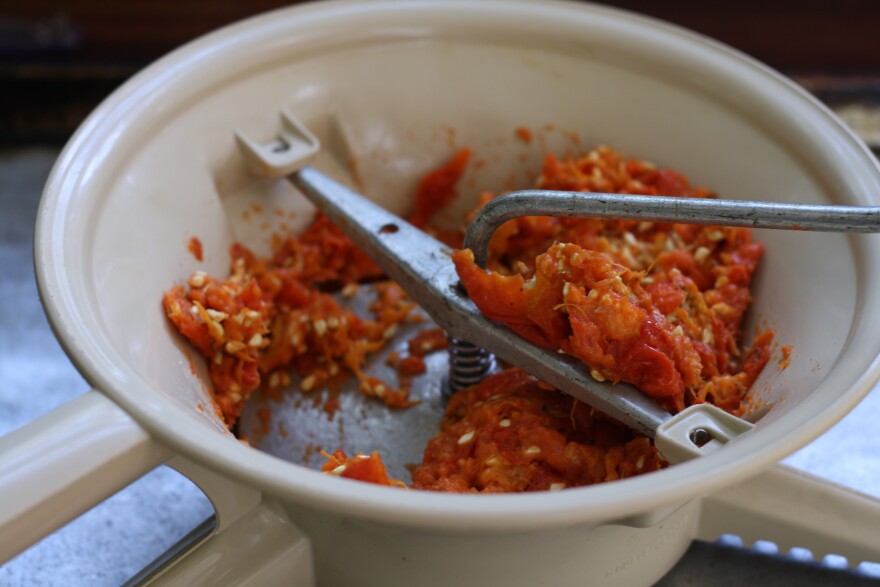I grew up in farm country, in Maine. Like most of us, I associate food with farms—big cultivated fields, animals grazing in pasture, aquaculture racks in the sea. But recently I’ve been thinking a lot more about wild foods. What would the world look like if more wild places filled our bellies?
The other afternoon I took my girls to walk the bayside beach. They snacked on sea beans and beach plums and I filled my t-shirt with the fruits of rosa rugosa. The hips are big this time of year and while some have gone soft and mushy, there are plenty of firm ones.

At home we pulled off the stems and put them in a pot with a bit of water. They smell like tomatoes! the girls said, and they were right. I wondered if they could be used like tomatoes too. We’d been planning to make rosehip jelly or maybe a simple syrup for cocktails, but we didn’t really need another sweet. We pulled out my computer and searched for rosehip tomato recipes online.
A woman in Tasmania makes rosehip ketchup, we read. She simmers garlic, onions, brown sugar and spices with vinegar and the pulp of her foraged fruit.
We learned about a homesteader at the 55th latitude in northern Germany who mixes her paltry tomato harvest with rose hips from the same frost and sea-salt tolerant rosa rugosa we have here at the 41st. We read about how she makes spaghetti sauce by combining the pulp of both fruits—rose hips and tomatoes—and seasoning this with Mediterranean herbs, olive oil, garlic, and sea salt.
Read this! my older daughter said. It was from a woman on the Olympic peninsula in Washington who finds rosehips along the shore and dries them. Come winter she combines the dried rosehips with peppermint and spearmint for tea.

By the time we emerged from our Internet rabbit hole the rosehips on our stove were soft. We drained the water and cranked them through our food processor—warm ribbons of bright orange paste piling up in the bowl beneath. The finished pulp without the skins or seeds was thick and red, with the texture of applesauce. It looked just like tomato paste, only orange instead of red. Why not use it the same way? I wondered aloud. It could add flavor to soups and stews all winter long and act as a base for rosehip ketchups or spaghetti sauces.
I seasoned our ruddy rose hip paste with a bit of salt. It tasted bright, acidic—less bitter than a tomato, sour maybe, or floral. Like a lemon mixed with a tomato, my girls said. We spooned the paste into an ice cube tray. The next morning I popped out the finished cubes and packed them into a Mason jar, waiting to see what kind of wild cooking projects the dark months will bring.
—
This piece first aired in 2019.








